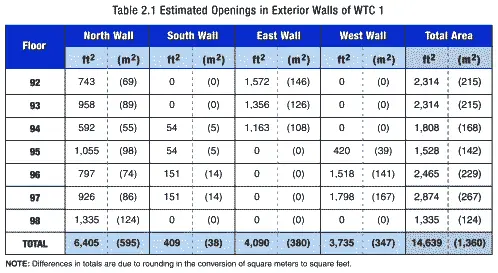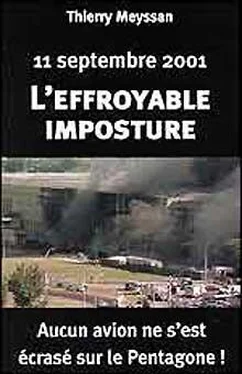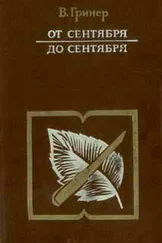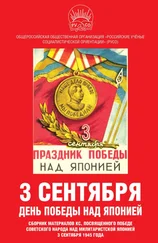This is impossible, as it is well known that the maximum temperature that can be reached by a non-stoichiometric hydrocarbon burn (that is, hydrocarbons like jet-fuel, burning in air) is 825 degrees Centigrade (1520 degrees Fahrenheit). Even worse, the WTC fires were fuel rich (as evidenced by the thick black smoke) and thus did not reach anywhere near this upper limit of 825 degrees. In fact, the WTC fires would have burnt at, or below, temperatures typical in office fires.
If the temperatures inside large regions of the building were above 700 degrees Centigrade, then these regions would have glowing red hot and there would have been visible signs of this from the outside. Even pictures taken from the air looking horizontally into the impact region show little or no sign of severe burning (above 700 degrees Centigrade).
When temperatures above 700 degrees Centigrade are reached within a region, this results in the breaking of the windows within that region. However, once the blast and fireball effects of the impacts had subsided, there appeared to be no ongoing window breakage from either tower, either as evidenced from pictures or video footage or as reported from the ground. In fact, significant areas of window even remained intact within the impact region. This is further evidence that fully developed fire conditions did not spread much through and beyond the initial devastated region, following the impacts.
In contrast, the First Interstate Bank fire in Los Angeles showed greater heating effects over larger regions than those observed in either tower. The temperature attained by the First Interstate Bank fire was clearly greater than that of either of the twin towers as the fire was hot enough to break the window glass (which rained down on the streets below presenting a considerable hazard to those on the ground).
The First Interstate Bank did not collapse.
A major portion of the uncertainty in these estimates is due to the scarcity of data regarding the initial conditions within the building and how the aircraft impact changed the geometry and fuel loading. Temperatures may have been as high as 900-1,100 degrees Centigrade (1,700-2,000 degrees Fahrenheit) in some areas and 400-800 degrees Centigrade (800-1,500 degrees Fahrenheit) in others.
All this talk of such high temperatures is to convince you that the steel beams and columns must have got really hot, but this is not so. For example, a ceiling gas temperature of 1,800 degrees Fahrenheit, for 5 minutes, would not heat the steel beams and columns significantly and the typical office fire that followed would not heat them to the point of collapse (trusses however, may have been significantly affected (this is the reason why the «truss theory» became popular)). It should be noted that the twin towers were designed to survive much more serious fires than those that occurred on September 11. That is the law.
The viability of a 3-5 trillion Btu/hr (1-1.15 GW) fire depends on the fuel and air supply. The surface area of office contents needed to support such a fire ranges from about 30,000-50,000 square feet, depending on the composition and final arrangement of the contents and the fuel loading present. Given the typical occupied area of a floor as approximately 30,000 square feet, it can be seen that simultaneous fire involvement of an area equal to 1-2 entire floors can produce such a fire. Fuel loads are typically described in terms of the equivalent weight of wood. Fuel loads in office-type occupancies typically range from about 4-12 psf, with the mean slightly less than 8 psf (Culver 1977). File rooms, libraries, and similar concentrations of paper materials have significantly higher concentrations of fuel. At the burning rate necessary to yield these fires, a fuel load of about 5 psf would be required to provide sufficient fuel to maintain the fire at full force for an hour, and twice that quantity to maintain it for 2 hours. The air needed to support combustion would be on the order of 600,000-1,000,000 cubic feet per minute.
Air supply to support the fires was primarily provided by openings in the exterior walls that were created by the aircraft impacts and fireballs, as well as by additional window breakage from the ensuing heat of the fires. Table 2.1 lists the estimated exterior wall openings used in these calculations. Although the table shows the openings on a floor-by-floor basis, several of the openings, particularly in the area of impact, actually spanned several floors (see Figure 2-17).
Sometimes, interior shafts in burning high-rise buildings also deliver significant quantities of air to a fire, through a phenomenon known as «stack effect,» which is created when differences between the ambient exterior air temperatures and the air temperatures inside the building result in differential air pressures, drawing air up through the shafts to the fire area. Because outside and inside temperatures appear to have been virtually the same on September 11, this stack effect was not expected to be strong in this case.
Based on photographic evidence, the fire burned as a distributed collection of large but separate fires with significant temperature variations from space to space, depending on the type and arrangement of combustible material present and the available air for combustion in each particular space. Consequently, the temperature and related incident heat flux to the structural elements varied with both time and location. This information is not currently available, but could be modeled with advanced CFD fire models.
Damage caused by the aircraft impacts is believed to have disrupted the sprinkler and fire standpipe systems, preventing effective operation of either the manual or automatic suppression systems. Even if these systems had not been compromised by the impacts, they would likely have been ineffective. It is believed that the initial flash fires of jet fuel would have opened so many sprinkler heads that the systems would have quickly depressurized and been unable to effectively deliver water to the large area of fire involvement (this is garbage, or a significant design fault). Further, the initial spread of fires was so extensive as to make occupant use of small hose streams ineffective.

Table 2.1 Estimated Openings in Exterior Walls of WTC 1
Some occupants of WTC 1 and WTC 2 began to voluntarily evacuate the buildings soon after the first aircraft struck WTC 1. Full evacuation of all occupants below the impact floors in WTC 1 was ordered soon after the second plane hit the south tower (Smith 2002). As indicated by Cauchon (2001a), the overall evacuation of the towers was as much of a success as thought possible, given the overall incident. Cauchon indicates that, between both towers, 99 percent of the people below the floors of impact survived (2001a) and by the time WTC 2 collapsed, the stairways in WTC 1 were observed to be virtually clear of building occupants (Smith 2002). In part this was possible because conditions in the stairways below the impact levels largely remained tenable. However, this may also be a result of physical changes and training programs put into place following the 1993 WTC bombing. Important modifications to building egress made following the 1993 WTC bombing included the placement of photo-luminescent paint on the egress paths to assist in wayfinding (particularly at the stair transfer corridors) and provision of emergency lighting for the stairways. In addition, an evacuation training program was instituted (Masetti 2001).
Shortly before the times of collapse, the stairways were reported as being relatively clear, indicating that occupants who were physically capable and had access to egress routes were able to evacuate from the buildings (Mayblum 2001). People within and above the impact area could not evacuate, simply because the stairways in the impact area had been destroyed.
Читать дальше













